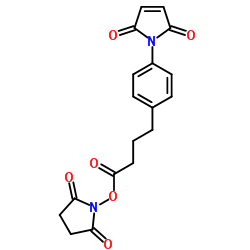Covalent grafting of fibronectin onto plasma-treated PTFE: influence of the conjugation strategy on fibronectin biological activity.
Karine Vallières, Eric Petitclerc, Gaétan Laroche
文献索引:Macromol. Biosci. 7(5) , 738-45, (2007)
全文:HTML全文
摘要
Surface coating of synthetic materials is often considered to improve biomedical devices biocompatibility. In this study, we covalently bound fibronectin (FN) onto ammonia plasma-treated PTFE via two crosslinkers, namely glutaric anhydride (GA) and sulfosuccinimidyl-4-(p-maleimidophenyl)butyrate (sulfo-SMPB). With respect to clean PTFE, cell adhesion increased markedly on both FN grafted surfaces, although it was twice higher on PTFE-GA-FN than on PTFE-SMPB-FN. ELISA experiments performed with a polyclonal antibody revealed that the amount of FN is identical on both surfaces while monoclonal antibody specific to the RGD binding site clearly demonstrated a greater availability when FN is surface grafted through GA. These results provide evidence of a variation in protein conformation correlated with the surface conjugation strategy.
相关化合物
| 结构式 | 名称/CAS号 | 分子式 | 全部文献 |
|---|---|---|---|
 |
4-(4-马来酰亚胺基苯基)丁酸-N-琥珀酰亚胺酯
CAS:79886-55-8 |
C18H16N2O6 |
|
Development of pro-apoptotic peptides as potential therapy f...
2014-01-01 [Nat. Commun. 5 , 4478, (2014)] |
|
AFM imaging of immobilized fibronectin: does the surface con...
2014-04-22 [Langmuir 23(19) , 9745-51, (2007)] |
|
Herceptin-conjugated temperature-sensitive immunoliposomes e...
2016-03-01 [Arch. Pharm. Res. 39 , 350-8, (2016)] |
|
Size-Dependent Cellular Uptake of Trans-Activator of Transcr...
2016-03-01 [J. Biomed. Nanotechnol. 12 , 536-45, (2016)] |
|
Optimisation of small-scale coupling of A5B7 monoclonal anti...
1993-01-14 [J. Immunol. Methods 158(1) , 49-56, (1993)] |